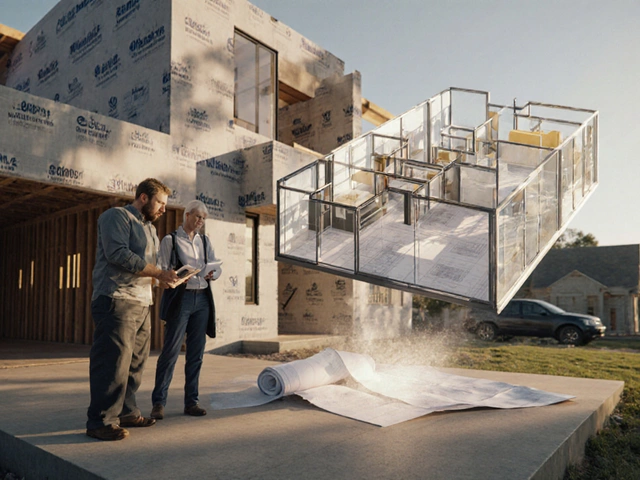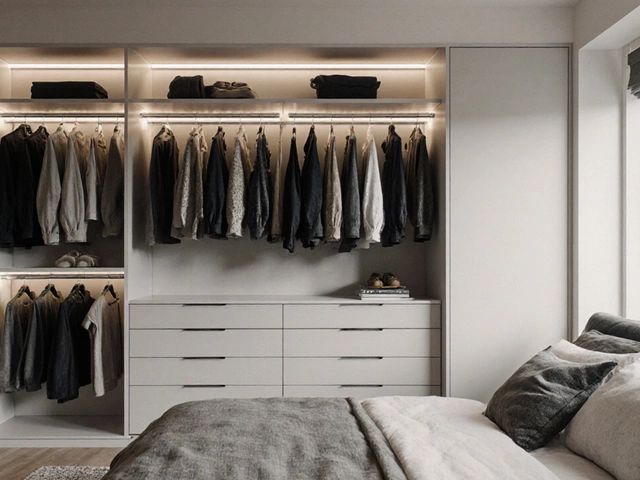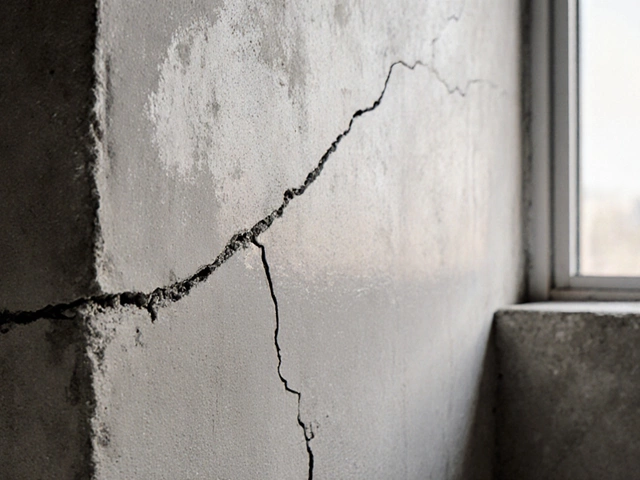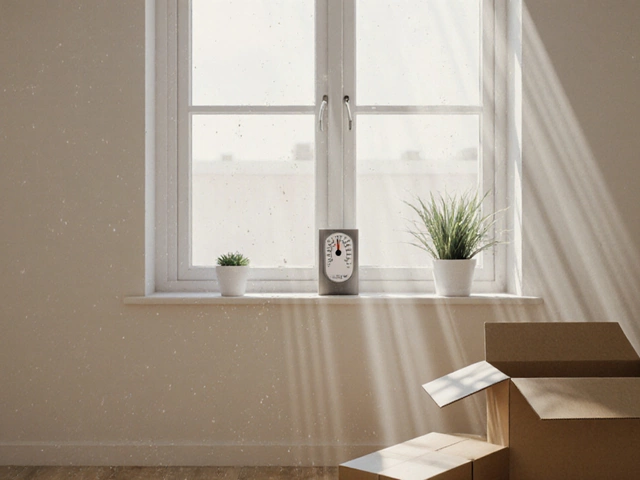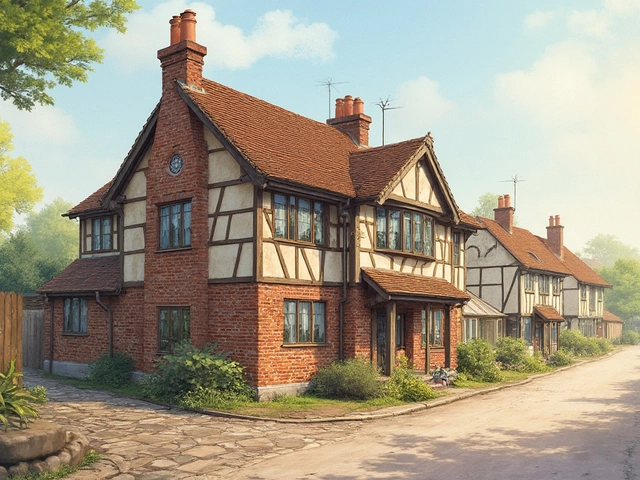In the world of commercial construction, Type 5 construction holds a distinct place due to its unique characteristics and widespread usage. Known for using wood as the primary structural material, this type of construction is renowned for its flexibility and cost-effectiveness in various building projects.
However, these structures bring specific considerations that need addressing, particularly regarding fire safety. While they offer numerous benefits, understanding their limitations is crucial for anyone involved in the building process. Exploring these aspects can guide decisions that ensure safety and functionality in commercial endeavors.
- Introduction to Type 5 Construction
- Characteristics of Type 5 Construction
- Advantages of Type 5 Construction
- Fire Safety and Regulations
- Practical Applications in Commercial Buildings
Introduction to Type 5 Construction
Type 5 construction, often recognized as wood-frame construction, plays a pivotal role in the landscape of commercial building projects. This construction method primarily utilizes wood as its core element, making it both economically viable and adaptable to a myriad of design requirements. It's not just a single-story home's domain anymore; it extends significantly into low to mid-rise commercial buildings, offering significant advantages in terms of construction speed and cost-efficiency.
The widespread adoption of Type 5 construction technologies stems from their ability to blend seamlessly into diverse architectural styles while providing a sustainable approach to building. Wood, being a renewable resource, adds an appealing environmental angle, particularly in an era where eco-friendliness is paramount. More than just an environmentally friendly option, wood also brings with it an element of warmth and aesthetic appeal that other materials often fail to match.
Despite these advantages, it's crucial to approach Type 5 construction with a clear understanding of its constraints. For instance, buildings constructed using wood frames are typically more susceptible to fire hazards compared to other types of commercial constructions. Therefore, specific safety measures and regulatory compliance must be integrated from the outset. According to the National Fire Protection Association, all materials used in such structures need to adhere to strict fire codes and guidelines to minimize risks. Venture capitalist Joe Smith remarked, "The beauty of Type 5 is in its efficiency; however, it's the responsibility of the builder to ensure that efficiency learns to dance with safety."
Another significant factor contributing to the popularity of this construction method is its flexibility concerning modifications and repairs. Unlike concrete or steel-framed buildings, making changes to a wood-framed structure involves less hassle and cost. This quality is particularly appealing in commercial settings, where business needs can prompt frequent layout adjustments. Transitioning from an office space to a retail setup, or vice versa, becomes significantly simpler and cost-effective with Type 5 construction.
In terms of labor, these projects often engage a workforce that is skilled in carpentry, tapping into a pool of talent that is both abundant and experienced. This labor factor ensures that projects can adhere to tight deadlines without the quality being compromised. The handling of materials also tends to be less cumbersome, reducing logistical challenges that might arise with heavier, bulkier construction materials.
In a nutshell, Type 5 construction remains a popular choice not only because of its cost-effectiveness but also due to its versatility and adaptability to different environmental and design needs. However, embracing this construction type requires a balanced approach, combining its natural advantages with a conscientious adherence to safety regulations to mitigate its inherent risks. This balance ultimately determines the success and longevity of the structures crafted in this style.
Characteristics of Type 5 Construction
Type 5 construction, often referred to as wood-frame construction, is a vibrant aspect of the commercial building landscape. It is fundamentally characterized by the use of combustible materials, primarily wood, for its structural framework, including walls, floors, and roofs. This method not only provides versatility in design but also allows for a quicker construction timeline compared to more rigid building types. Traditional wood framing integrates materials like plywood and other engineered wood products, which are instrumental in creating flexible and dynamic spaces. Moreover, it supports various architectural styles, lending a unique aesthetic appeal to any commercial property.
Embracing modern engineering techniques, Type 5 construction capitalizes on the tensile strength and adaptability of wood, creating spaces that are both durable and dynamic. Wood's natural insulating properties make it a strong contender in energy efficiency, reducing heating and cooling costs over the long term. In addition, technological advancements have enhanced the fire resistance of materials used in this construction type, incorporating innovations such as fire-retardant coatings and treated lumber. However, these structures do require diligent fire safety systems, like smoke alarms and sprinklers, to address any potential risks effectively.
"The versatility of wood-framed construction has continually proven valuable, both in past practices and looking toward the future, especially when enhanced with modern safety measures." – International Wood Products Association
Another compelling factor is the economic aspect. The materials employed in Type 5 construction are generally cost-effective, resulting in lower upfront costs while allowing builders to work within flexible budgets. This makes it a popular choice for a plethora of small to medium-sized commercial projects. Moreover, the relative ease of sourcing materials and the simplicity of construction methods contribute to its popularity. Despite common concerns regarding durability, when properly constructed and maintained, these buildings can stand the test of time, offering both reliability and functionality. It's an appealing choice that continues to evolve with contemporary construction technology advancements.

Advantages of Type 5 Construction
Delving into the world of Type 5 construction, one can quickly recognize why this method is a preferred choice for many commercial architectural projects. This construction type shines brightly due to its remarkable blend of economic efficiency and architectural flexibility. It primarily uses wood as the structural framework, which is less costly compared to steel or concrete, making it an attractive option for developers and builders aiming to manage budgets effectively without compromising on quality.
The lightweight nature of wood in Type 5 construction allows for quicker assembly times on-site. This is particularly beneficial when project timelines are tight and efficiency is imperative. The material is easier to handle, lift, and maneuver compared to heavier construction materials, significantly speeding up the building process. This agility can translate to lower labor costs and reduced project duration, both of which are critical factors in commercial construction ventures.
Architecturally, the versatility offered by using wood facilitates an array of designs and layouts. Developers can experiment with various forms without the constraints often posed by more rigid materials, allowing for creative and bespoke design solutions. This adaptability extends to pleasing aesthetics, as wood can be finished in myriad ways to match or enhance specific visual themes intended for a commercial space.
"The beauty of wood is in its capacity to evolve with the vision," remarked a renowned architect in a recent building forum, highlighting its transformative qualities.
Environmental consciousness also plays a role when considering Type 5 construction. Wood is a renewable resource, adding an element of sustainability often sought after in modern constructions. When sourced responsibly, wooden frameworks contribute less to the carbon footprint compared to alternative materials, aligning with eco-friendly building practices that many commercial projects are proudly moving towards today.
Additionally, technological advancements in wood treatment have significantly enhanced its durability and resistance to pests and decay, adding long-term viability to the quality of buildings erected using this method. It's also worth noting that for smaller-scale buildings, wood offers sufficient structural integrity, making Type 5 construction a sound choice for various applications beyond just aesthetics or cost considerations. In some cases, such projects have shown to result in lower maintenance costs over the building's lifetime.
The combination of quick installation times, adaptability in design, cost-effectiveness, sustainability, and improved material treatments makes Type 5 construction a robust contender in the commercial building scene. Coupled with the fact that wood construction often falls under favorable building regulations, it becomes apparent why it remains a steadfast choice for many construction professionals worldwide.
Fire Safety and Regulations
When considering Type 5 construction, fire safety becomes a prominent concern due to the extensive use of wood, a material that is inherently more combustible than steel or concrete. As a result, strict building codes and regulations govern these constructions to prevent and mitigate fire risks. One of the key measures in regulating fire safety in Type 5 buildings is the imposition of limits on structure height and area, which ensures that in the event of a fire, evacuation and firefighting efforts can be carried out effectively. This often involves incorporating fire-resistant materials in strategic areas, such as stairwells and exterior walls, to mitigate the spread of fire.
A crucial aspect of these regulations includes the installation of automatic sprinkler systems in buildings where they are deemed necessary by local codes. According to the National Fire Protection Association (NFPA), "The presence of sprinkler systems reduces the civilian death rate by about 87%," highlighting their importance in saving lives. Fire detection systems like smoke alarms are also mandated to ensure early detection of potential fires, giving occupants more time to evacuate and reducing the chances of extensive damage.
Building professionals must also focus on fire compartmentalization, which involves creating sections within a building that can contain a fire and prevent it from spreading to other parts of the structure. This is commonly achieved by using fire-rated walls and doors. Additionally, fire stops and draft stops are used in concealed spaces like attics or between floors, where fires could otherwise move undetected. These precautions not only enhance the safety of the occupants but also minimize damage to properties and protect investment.
Compliance with these fire safety regulations demands active collaboration between architects, engineers, and contractors to ensure that the building's design and construction meet all necessary guidelines from the outset. Local fire codes play a pivotal role, often dictating specific requirements based on the location and intended use of the building. For example, the International Building Code (IBC) is frequently referenced for setting these standards. Staying updated with these codes is a continuous responsibility for builders, as regulations can evolve with technological advancements and lessons learned from past incidents.
Engaging with fire safety consultants early in the project can provide valuable insights, ensuring that safety measures are built into the design rather than being added as an afterthought. These experts can advise on the best methods to integrate fire safety components seamlessly, preserving the architectural integrity while maximizing protection. By understanding and adhering to these fire safety principles, those involved in commercial construction can significantly augment the resilience and safety of Type 5 structures.

Practical Applications in Commercial Buildings
In the landscape of modern commercial construction, Type 5 construction finds its niche due to its convenience, adaptability, and economic benefits. This approach primarily revolves around wood-framed structures, which leads to an array of applications particularly beneficial for businesses looking to balance cost with design efficiency. The versatility of wood allows architects and builders to experiment with layouts, creating spaces that maximize utility without overspending. Such flexibility can accommodate everything from small boutiques to expansive office complexes, making it a popular choice across various sectors.
One notable application of Type 5 construction is in retail buildings and mixed-use developments. These structures often demand a unique blend of durability and aesthetic appeal, along with quick construction timelines. Wood framing, characteristic of Type 5, supports these criteria by enabling fast construction and offering a variety of finishes that can adapt to contemporary styles. With its lightweight nature, wood is easier to work with, facilitating rapid changes in design as needs evolve. The efficient use of resources often means a quicker return on investment for businesses, a crucial factor in competitive markets.
Educational and Residential Facilities
Another critical area employing Type 5 construction is educational facilities. Schools, universities, and even daycare centers benefit from the warm and inviting environments that wood can create. These spaces are designed to promote comfort and inspiration, essential for learning environments. Additionally, the ability to tailor spaces to specific educational needs—from expansive classrooms to intimate study nooks—is a significant advantage. A report from the National Association of Home Builders highlights how modern wood constructions integrate energy-efficient technologies, meeting both cost and environmental considerations.
“The use of wood in educational facilities offers an unmatched combination of sustainability and practicality,” stated an expert in construction trends, underscoring its growing popularity.
The hospitality industry also harnesses the potential of Type 5 construction in building hotels and guest accommodations that strike a balance between luxury and functionality. The charm and warmth associated with wood interiors often contribute positively to the guest experience, a crucial aspect in hospitality. This construction style supports open layouts, which are favored for creating welcoming and spacious lobbies, dining areas, and rooms. According to recent trends, eco-conscious travelers appreciate wood-built hotels for their sustainability angle, which is growing as a decisive factor in booking decisions.
Regulations and Considerations
While Type 5 construction offers multiple advantages, including cost and speed, it also necessitates careful attention to regulatory and safety concerns, notably fire safety. Commercial establishments must comply with stringent building codes to ensure the safety of occupants. This includes installing advanced sprinkler systems and implementing fire-retardant materials in critical areas. Many regions have specific requirements governing the use of Type 5 constructions in multi-story buildings.
Understanding these regulations and creatively working within these parameters requires an expert team familiar with both the potential and limitations of wood-based construction. However, when effectively managed, the benefits of Type 5 construction in commercial settings are numerous, offering a blend of economic and aesthetic advantages that resonate well with many business and project goals.

